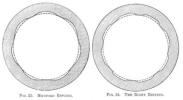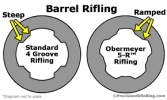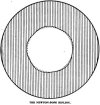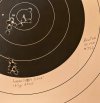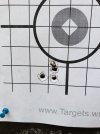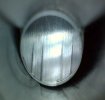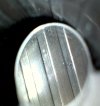Dimner
Named Man
I currently have a bit of tikka fever. Being able to easily switch barrels with only a few tools and headspace guages makes me do alot of thinking. Non-Practical thinking, but interesting (to me) nonetheless. Also, I have been spending alot of time in a deer blind. Sitting there, silent, still, allows for all kinds of crazy ideas to popup.
This one is about rifling. through the year, I have been playing with my 7.7 arisaka and for an old, beatup, military surplus rifle, I can get 1 to 1.5 moa accuracy with NOE's 311-199-FN. Made me start thinking, is it because of the polygonal rifling? I cannot find it, but a while back, I found a brief comment from Fiver on the other site. In usual Fiver coded syntax, he alluded to the Type 99's rifling being very good for cast bullets. Is that something that you could elaborate on?
So the thought experiment is this:
Tikka receiver, with two barrels. Both made by the same manufacturer, same barrel contour, both using the same chamber reamer. Let's say 30-06. One is button rifled. One is cut 5R rifling. Will we see any noticeable difference in accuracy? Will we see any noticeable difference with recovered bullets? Will there be any other differences? This is also assuming we use a bullet mold that provides us with at least a good static/dynamic fit.
This one is about rifling. through the year, I have been playing with my 7.7 arisaka and for an old, beatup, military surplus rifle, I can get 1 to 1.5 moa accuracy with NOE's 311-199-FN. Made me start thinking, is it because of the polygonal rifling? I cannot find it, but a while back, I found a brief comment from Fiver on the other site. In usual Fiver coded syntax, he alluded to the Type 99's rifling being very good for cast bullets. Is that something that you could elaborate on?
So the thought experiment is this:
Tikka receiver, with two barrels. Both made by the same manufacturer, same barrel contour, both using the same chamber reamer. Let's say 30-06. One is button rifled. One is cut 5R rifling. Will we see any noticeable difference in accuracy? Will we see any noticeable difference with recovered bullets? Will there be any other differences? This is also assuming we use a bullet mold that provides us with at least a good static/dynamic fit.


